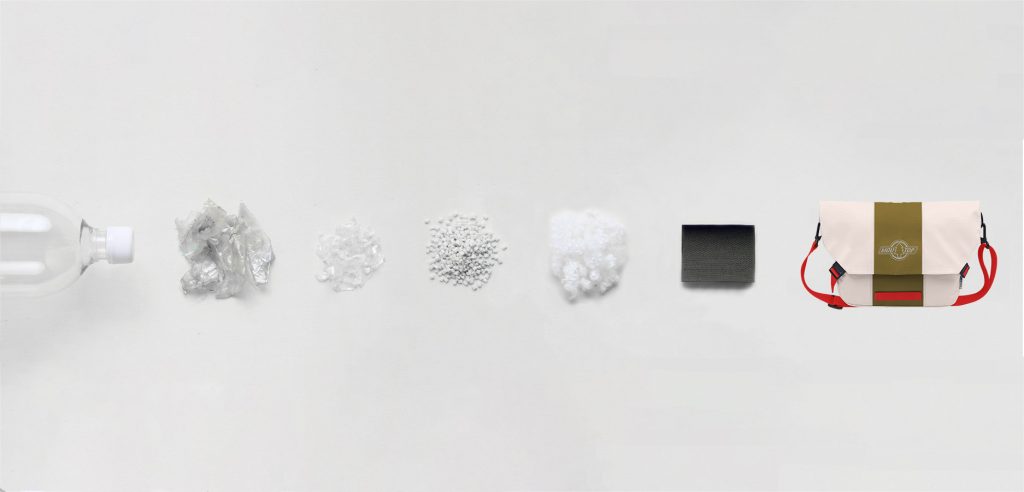We sometimes see on shopping bags, t-shirts, leggings or backpacks we use: “This product is made from recycled water bottles!” You may also see this type of material on other projects , from rPET, rePET to rePETE. Regardless of the name, the term describes a material made from recycled PET plastic.
Sounds good, but what does it actually mean? How to make a water bottle into fabric? Is this process sustainable? What are the implications and benefits of buying products made from rPET?
About the RPET
- What is the RPET?
- Advantages and disadvantages of using RPET.
What is the RPET?
RPET is recycled PET (or Polyethylene terephthalate) plastic. As a fiber, RPET can be used to make anything from clothes and blankets to sleeping bags and rugs.
PET is it is one of the most common plastics in the world. PET is originally produced from fossil fuels — typically natural gas and petroleum, but it is one of the easiest plastics to recycle. You have probably seen this plastic in your soda and water Bottles that are marked with the resin code #1. Get everything from your favorite peanut butter or salad dressing bottles to cleaning fluid bottles, mouthwash bottles, and medicine bottles. Those single-use water bottles, chances are, most of the plastic containers in your home are made of this common plastic!
Production Process
RPET material is recycled by coke bottle. After the recycled coke bottle is rolled into pieces, it can be recycled and effectively reduce the carbon dioxide emissions. It saves nearly 80% of the energy of the polyester fiber produced by the conventional process.

Advantages and disadvantages of using RPET.
The world is struggling to control the menace of plastic use and waste. Experts opine that at current consumption rate almost all water bodies of the world will get choked by plastic waste by 2050.
RPET is made by recycling plastic that was previously used as a packaging material. For example, these include plastic bottles. After collection, it is sorted and cleaned, and then converted to rPET, which can then be used in new packaging. By recycling PET bottles and turning them into rPET, a lot of landfill space can be saved.
Actually:
4,800 16-ounce bottles are equal to one cubic yard.
4,050 20-ounce bottles are equal to one cubic yard.
3,240 1-liter bottles are equal to one cubic yard.
2,430 2-liter bottles are equal to one cubic yard.
1,350 3-liter bottles are equal to one cubic yard.
With the advancement of technology, the field of use of RPET is gradually expanding, with more advantages:
PET is relatively more thermally stable
It has more tensile strength.
Better transparency gives it elegant look and diversity of use.
RPET material is relatively lightweight and shatter-resistant.
The recycling of the PET makes it inexpensive.
It helps in cutting the plastic load on earth.
RPET consumes less energy and is cost-effective.
